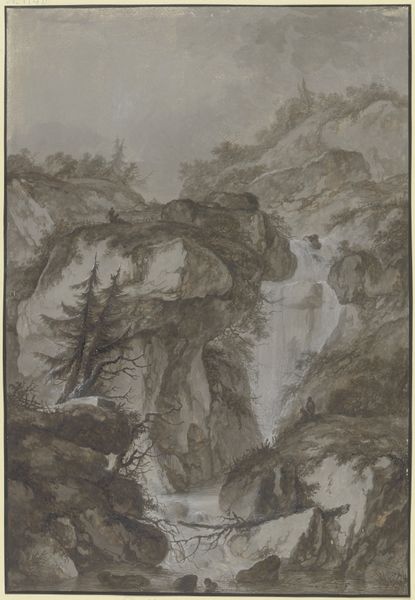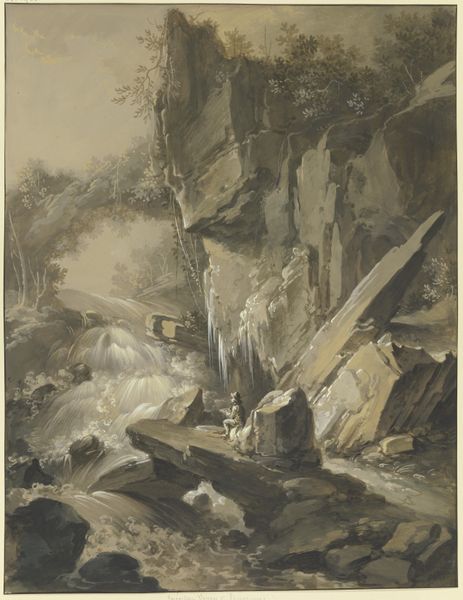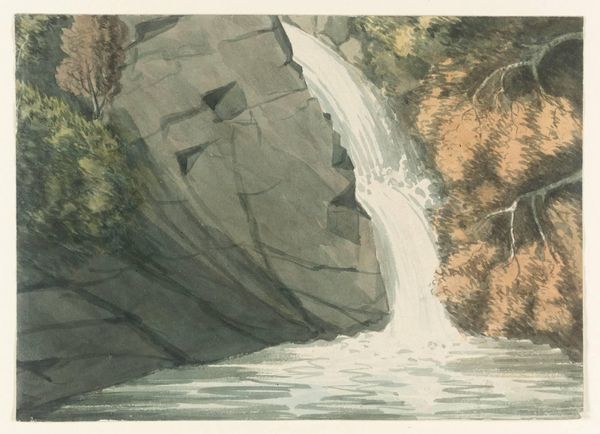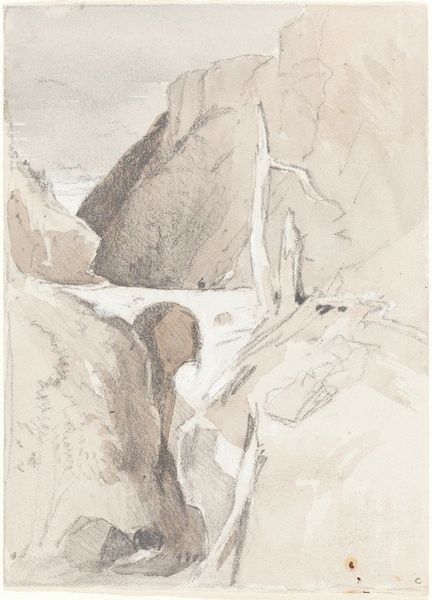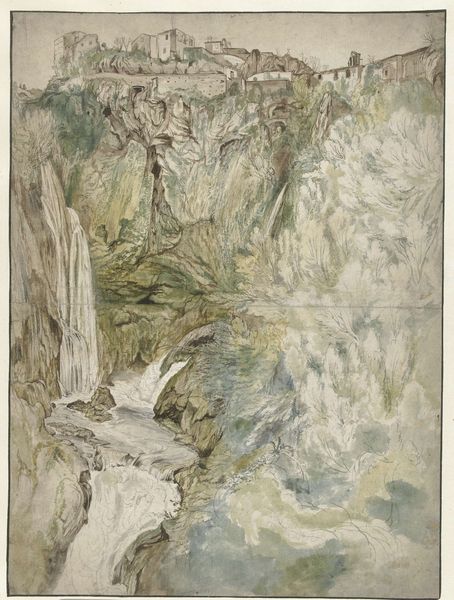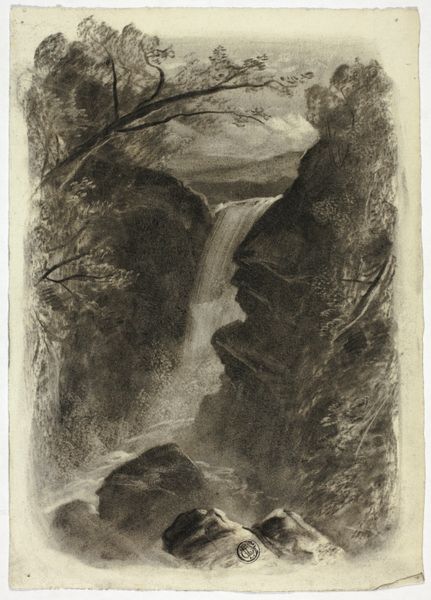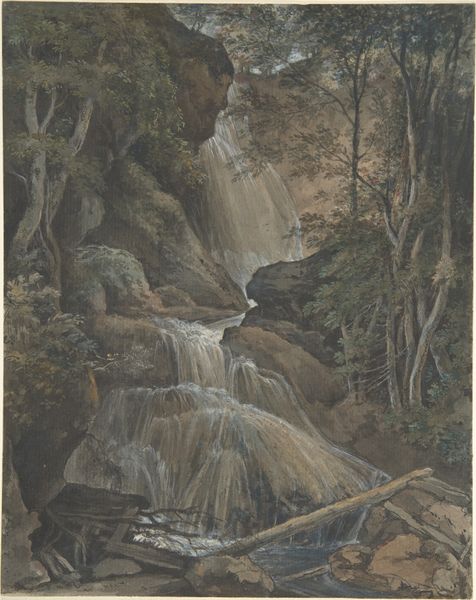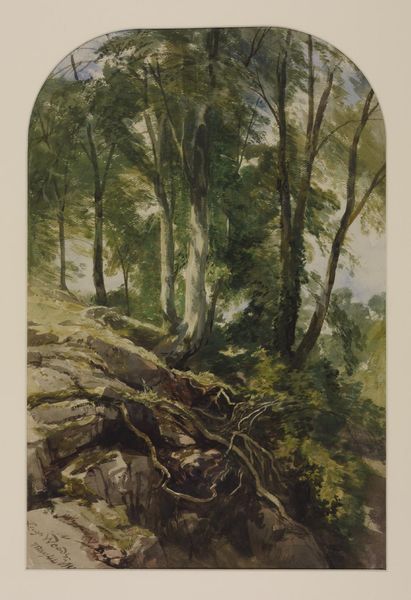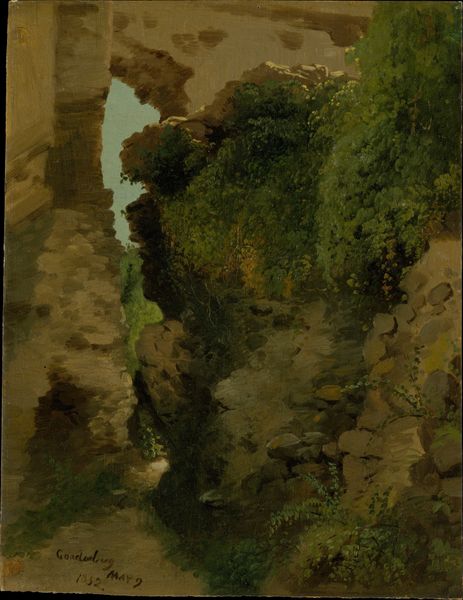
Dimensions: support: 380 x 265 mm
Copyright: CC-BY-NC-ND 4.0 DEED, Photo: Tate
Editor: This is Francis Towne's "Waterfall near Ambleside." It's watercolor on paper, and I'm struck by how the artist renders the rock textures. What can you tell me about Towne's process here? Curator: Towne’s emphasis on the material rendering of the landscape invites us to consider the labor involved in its representation. How does the watercolor, a readily available commodity, transform the sublime experience of nature into a consumable image? Editor: So, you're saying that the painting itself becomes a product of its time? Curator: Precisely. And by focusing on the materiality of the paint and paper, we can question the traditional hierarchy between art and craft. Does the mass production of art supplies democratize landscape painting, or does it further commodify our relationship with the natural world? Editor: That's a really interesting take. It gives me a lot to think about.
Comments
tate 6 months ago
⋮
http://www.tate.org.uk/art/artworks/towne-waterfall-near-ambleside-t08262
Join the conversation
Join millions of artists and users on Artera today and experience the ultimate creative platform.
tate 6 months ago
⋮
In 1786 Towne joined two Exeter friends, James White and John Merivale, on a tour of the Lake District. Ambleside served as a base for the party during most of their tour, and Towne therefore explored the area in some depth. He made various panormaic views of the vicinity but especially a number of versions of the secluded waterfalls of Stock Gill. In this example, his elevated and close viewpoint makes the subject both more intense and more dramatic. Two barely discernible figures on the far left-hand rock provide a sense of scale. Gallery label, September 1997

